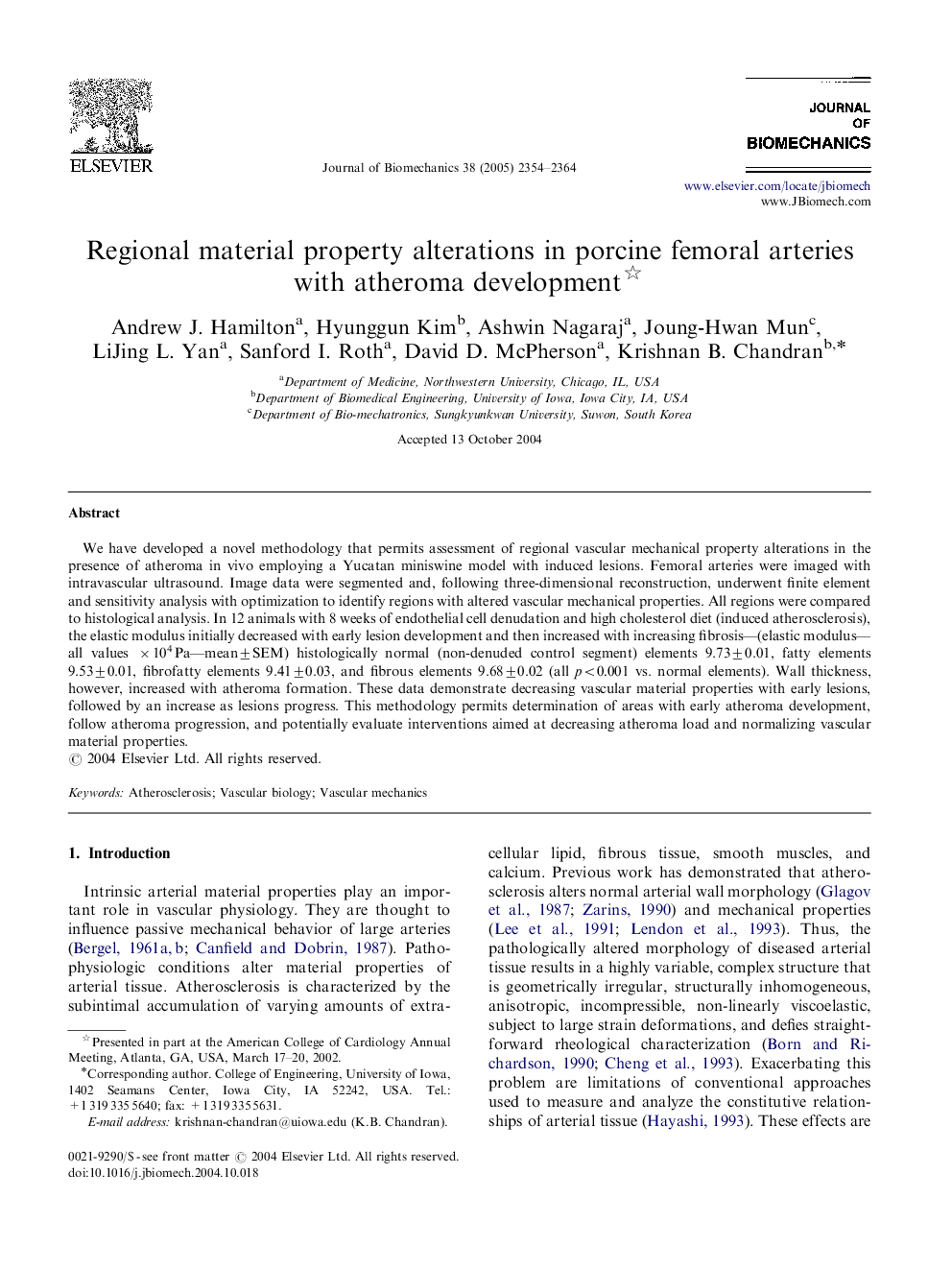| Article ID | Journal | Published Year | Pages | File Type |
|---|---|---|---|---|
| 875210 | Journal of Biomechanics | 2005 | 11 Pages |
We have developed a novel methodology that permits assessment of regional vascular mechanical property alterations in the presence of atheroma in vivo employing a Yucatan miniswine model with induced lesions. Femoral arteries were imaged with intravascular ultrasound. Image data were segmented and, following three-dimensional reconstruction, underwent finite element and sensitivity analysis with optimization to identify regions with altered vascular mechanical properties. All regions were compared to histological analysis. In 12 animals with 8 weeks of endothelial cell denudation and high cholesterol diet (induced atherosclerosis), the elastic modulus initially decreased with early lesion development and then increased with increasing fibrosis—(elastic modulus—all values ×104 Pa—mean±SEM) histologically normal (non-denuded control segment) elements 9.73±0.01, fatty elements 9.53±0.01, fibrofatty elements 9.41±0.03, and fibrous elements 9.68±0.02 (all p<0.001p<0.001 vs. normal elements). Wall thickness, however, increased with atheroma formation. These data demonstrate decreasing vascular material properties with early lesions, followed by an increase as lesions progress. This methodology permits determination of areas with early atheroma development, follow atheroma progression, and potentially evaluate interventions aimed at decreasing atheroma load and normalizing vascular material properties.
